What does a caviar taste like? I bet it tastes fancy! Especially the real caviar. The United Nation’s Food and Agriculture Organization has clearly defined that fish roe (fish eggs) not coming from the sturgeon family is not a caviar but a caviar substitute.
Caviar used to be something you cannot readily buy. But the availability of importation and exportation of food had widened every countries’ menu. Staple dishes and national dishes from different countries are available everywhere. Even exotic food selections are not as rare anymore.
First Things First
Before you panic and buy the first tin of caviar you see, let’s answer some questions to guide your gastronomic escapade. Firstly, let’s find out what it is and the difference between caviar and the caviar substitute.
Then let’s take a look at how they get to your plate. Yes, they don’t just magically appear in grocery stores and restaurants’ kitchen!
There are different types of caviar too; you may also want to take note of that and the good stuff to eat with it! Let’s take a look at how much they cost too! Is it worth the money?
What is Caviar?
Caviar comes from a fish, a sturgeon fish, yes. When the ovaries of a sturgeon fish, and any of its kind, is harvested and properly salted, they end up becoming black gold! The processing of caviar is a lucrative art!
What is Caviar and What is Not?
The United Nation’s Food and Agricultural Organization, Convention on International Trade in Endangered Species of Wild Fauna and Flora (CITES), United States Customs Service and World Wide Fund for Nature has unanimously agreed that fish eggs other than the sturgeons are caviar substitute.
This means that all fish roe coming from the sturgeon family is the authentic caviar. The expensive stuff. The real thing!
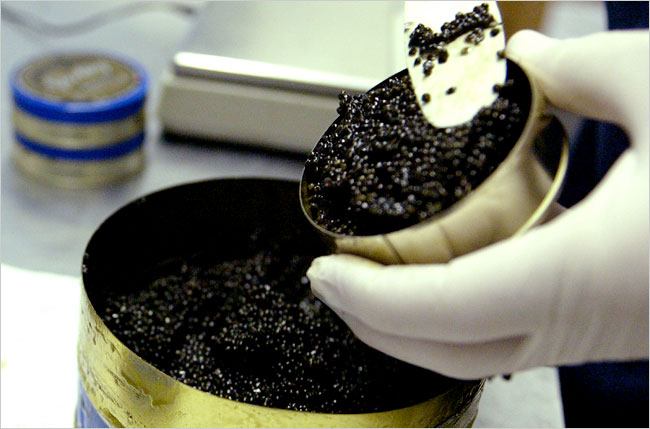
Via nytimes.com
I know a lot of us have once called salmon roe, salmon caviar. It’s okay. They are pretty much alike in a lot of sense, but the tax was regulating body is controlling the rarity of caviar. Not that salmon roe is fake and or synthetically produced. They are just classified differently.
This also means that salmon caviar, trout caviar, lumpfish caviar, and all the other fish roe that is not sturgeon is a caviar substitute. They are all good too. (It’s a shame they are marketed as inferior caviar.)
Since this food item is not native to some countries, and they are frequently imported, the importation and exportation agencies have classified caviar accordingly to define the tax duties to be settled.
How Is Caviar Farmed?
Some connoisseur may look down on farmed caviar as inferior over the wild, ocean-caught sturgeon. (But hey, let’s not drive them fishes to extinction!) Since most of the known species of sturgeon fish are threatened, if not critically endangered, farming became the most sustainable way of supplying caviar.
Caviar in your plate can be around 5-7 years in the making. Yes, that is a tremendous amount of time! That’s why caviar is sometimes compared to aged wines. It takes a lot of time before harvest.
The farms make sure that they get the purest source of water so that they have control over what to put in there. This ensures that the fishes in each tank receive the right amount of nutrition in the right environment to promote its growth.
After five to seven years of rearing, the sturgeon fish is ready for harvest. Each fish undergoes an ultrasound to make sure they are already matured to the right size. When they are ready, the flesh and the eggs will be harvested, processed and packed.
They practice extreme sanitation to make sure that they can serve you the top-quality caviar.
Different Types of Caviar
Caviars are not all alike. Yes, they belong in the same family, but each has a different unique characteristic that separates them from the other.
1. Beluga Caviar
The beluga sturgeon is the rarest type in the beluga family, and its population is near extinction. The beluga sturgeon takes about 20 years to reach its maturity and be ready for harvest. Because of its rarity and the amount of time it takes to be harvested, very little is produced annually.
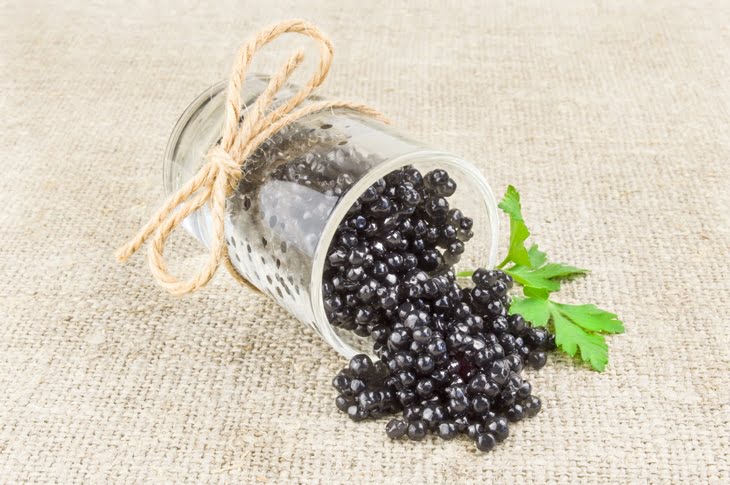
This rarity has driven its price up, and it truly deserves the title “black gold.” This is something you won’t munch like corn in a cob! It’s price easily ranges from 10 to 12 grand!It is famed not only for its bursting flavor but also for its exotic rare value and the amount of effort it requires from rearing to harvest.
2. Osetra Caviar
Osetra sturgeon fish takes fewer years before harvest compared with its cousin Beluga. It only takes them around seven years to reach maturity.
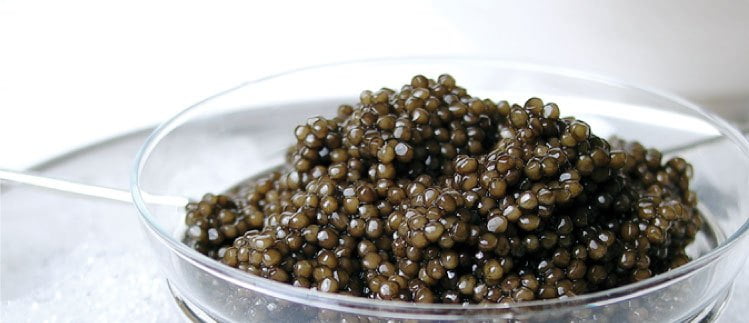
Via caviarrusse.com
Their eggs are golden brown in color and is a little smaller than the Beluga caviar. Compared with the other caviars, they have the firmest texture among them all.
3. Sevruga Caviar
Sevruga or commonly known as star sturgeon is another known caviar of choice. Their eggs are tiny and light in color.It takes roughly seven years before they mature into harvest. Given this shorter time for harvest, Sevruga caviar is one of the most plentiful types of caviar you can avail on the market.
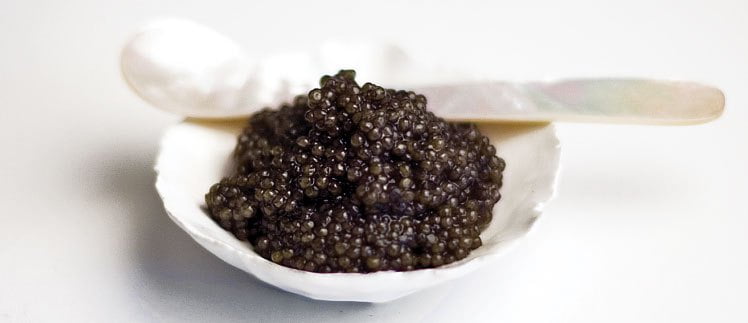
Via caviarrusse.com
4. Sterlet Caviar
The female Sterlet Sturgeon can mature as early as five years. Their eggs are characteristically grayish and tiny.
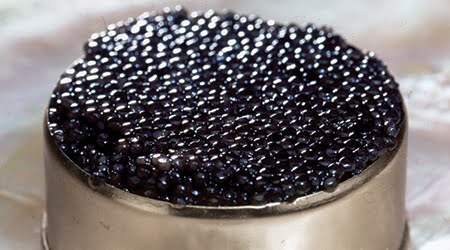
Via caviarrusse.com
5. Pacific Caviar
The least expensive of the list of caviar perhaps is the Pacific North American Caviar from the Pacific sturgeon fish. They are the smallest sturgeon species and mature and is ready for harvest around ten years.
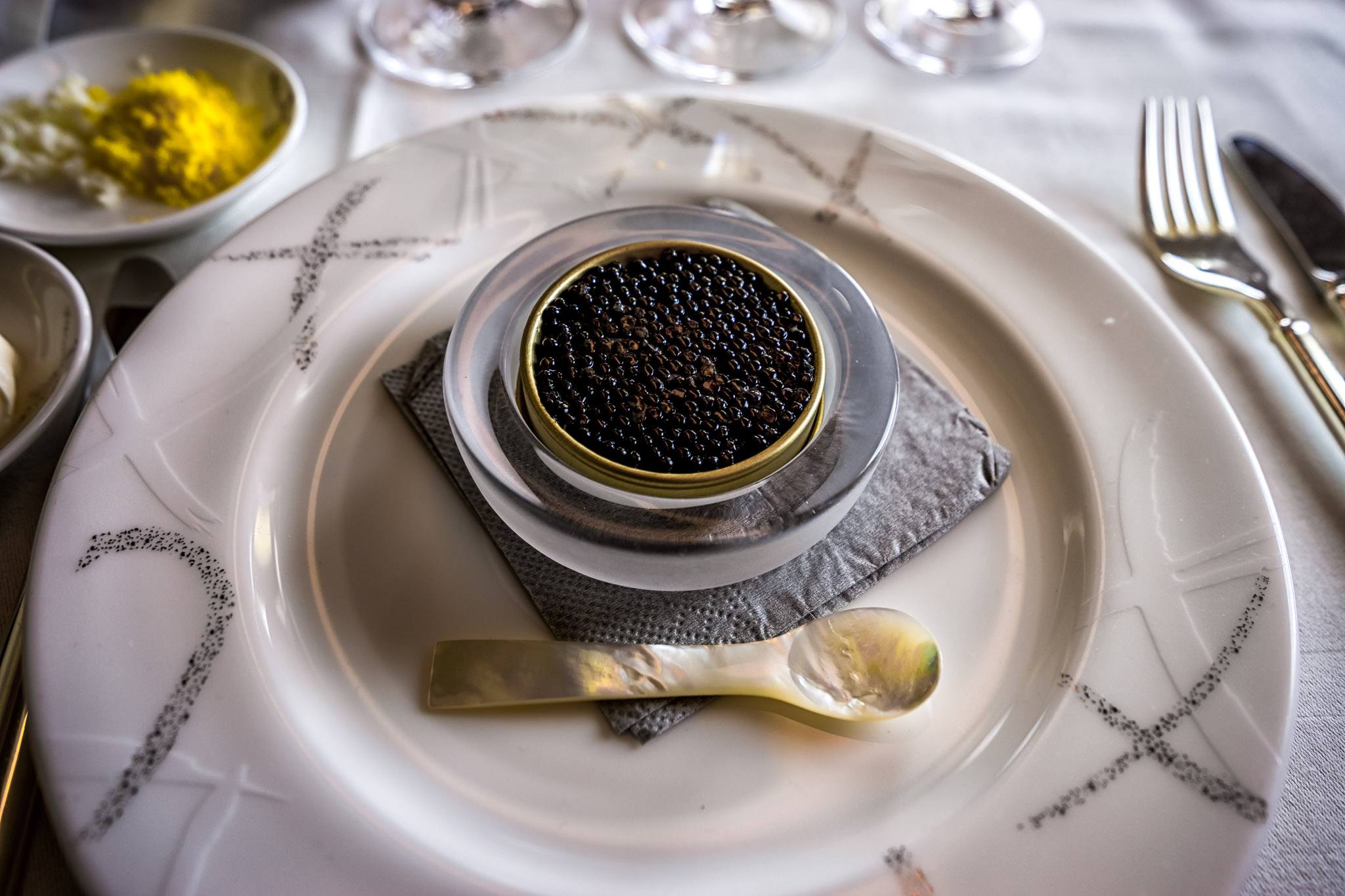
What Does Caviar Taste Like?
Caviar is a fancy dish served mostly in classy restaurants. They are a treat for seafood lovers! I can’t even begin to describe how a caviar tastes like as words may not be enough.
A good caviar begins with the eye feasting on its gorgeous presentation. The hypnotizing sheen alone is enough to make you drool. But, of course, you compose yourself as you hold your mother of pearl spoon.
You resist the temptation to churn everything at once in an uncontrolled gluttonous frenzy. You hold back. As you hold your special spoon, you think intently of savoring the taste. You start to imagine the sea, and you can already taste it.
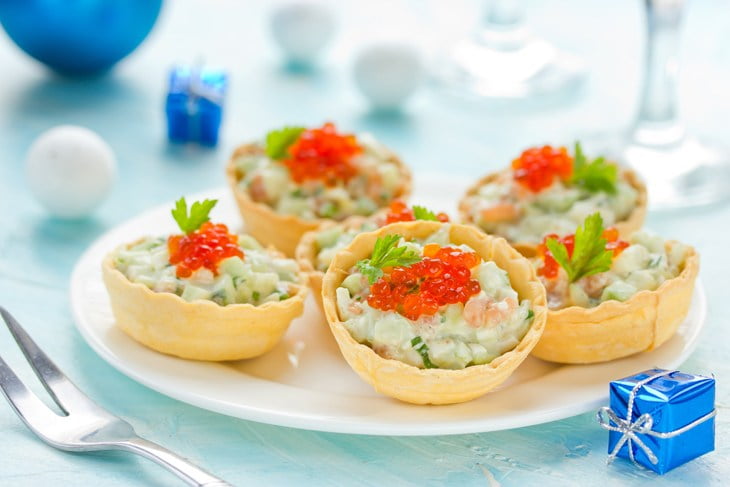
Then you stick you’re spoon to the caviar. Realizing its worth, you hesitate. Then you only take half a spoon full and put it in your mouth. You then chew gently, not maniacally. You feel each pearl pop in your mouth. Each pearl is releasing the summary of the goodness of the sea.
The taste of brine is there; it’s just enough saltiness. As the caviar pops in your mouth, you are transported in the middle of the sea. You are floating amidst the ocean while the sun kisses your skin. You can taste the delicious flavor of the fish.
The umami is there, and you can taste the rich minerals too. As you swallow it, the caviar flows in your throat giving it a delectable finish. Then you sip your champagne. You are not full, but you are satisfied. Yes, it’s worth it.
The Understatement
I’m afraid the description I left you might be an understatement of what a caviar taste like. You might disagree with me. You may have tasted it and didn’t like it. But I dare you. You have not tapped the awesome quality of a fresh caviar.
How Much Does a Caviar Cost?
The cost of caviar varies according to their species. The beluga sturgeon is a prized fish that yields caviar costing up to seventeen thousand dollars per pound! We are just talking about the beluga sturgeon. The rare albino beluga, or known as Almas Beluga which lives a century costs 17 grand a pound!
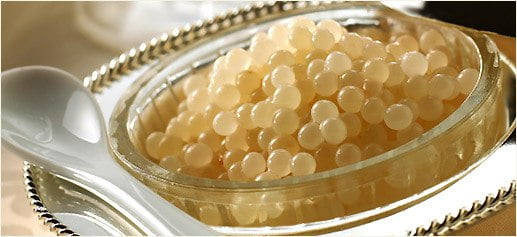
Via toptenz.net
A thirty-gram tin can cost around $75 at the farm. The retail can climb to 400% in restaurants! That is just the beginning of it. Beluga caviar can be bought at around $350 per tin! Imagine how much that would cost on retail?
Final Words
Caviar is a truly exquisite delicacy. Its reputation even separates it from the other fishes. Only the sturgeon family upholds the name caviar. The other fishes have their eggs too, but they are not deemed worthy to be lined-up with caviar.
The intricacy of farming for caviar is like making a delicate wine. It takes years and tremendous effort to ensure that the harvest would be of top-notch quality.
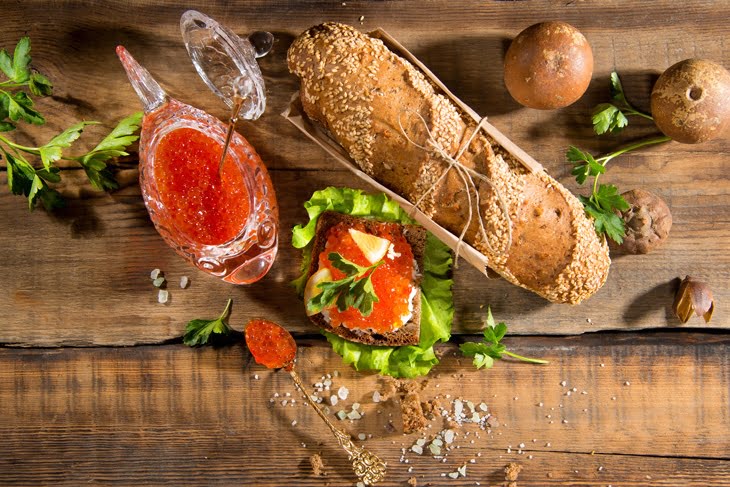
Every species has their set unique set of characteristic, and not all of them are abundant. This insanely drives the price of caviar high! The rarer the species, the higher the price goes.
The price you pay for it starts from expensive to insanely expensive! A single serving can buy you a sumptuous meal for the whole family in a modest restaurant! Give it a shot, eat it over toasted bread.
Caviar can be intimidating, but I hope you have learned a thing or two. Leave a question below if more questions popped in your mind. Don’t hesitate to share this page if you find it useful!
related resources


Caviar is tip top!
I sometimes use it for toothpaste 😛